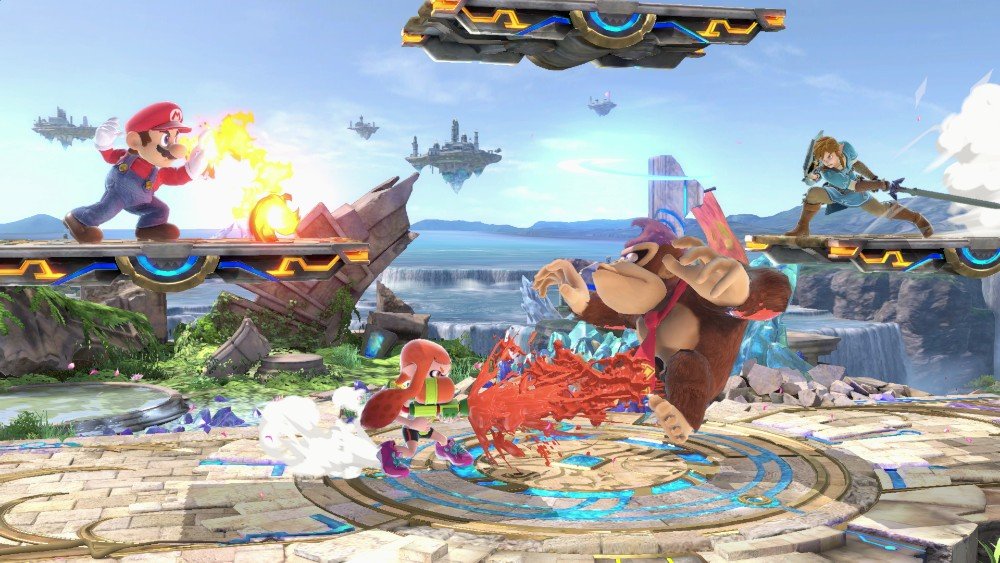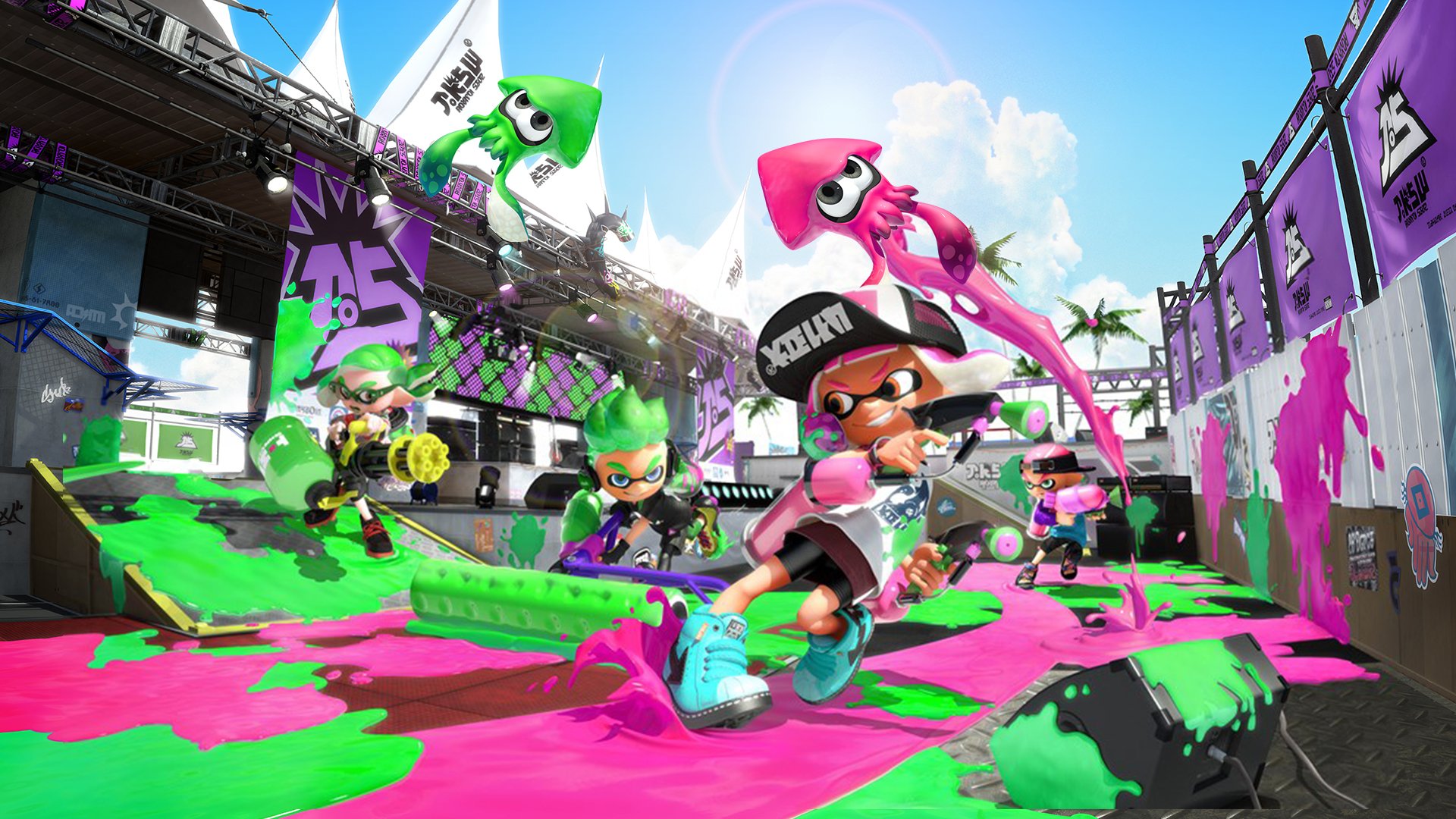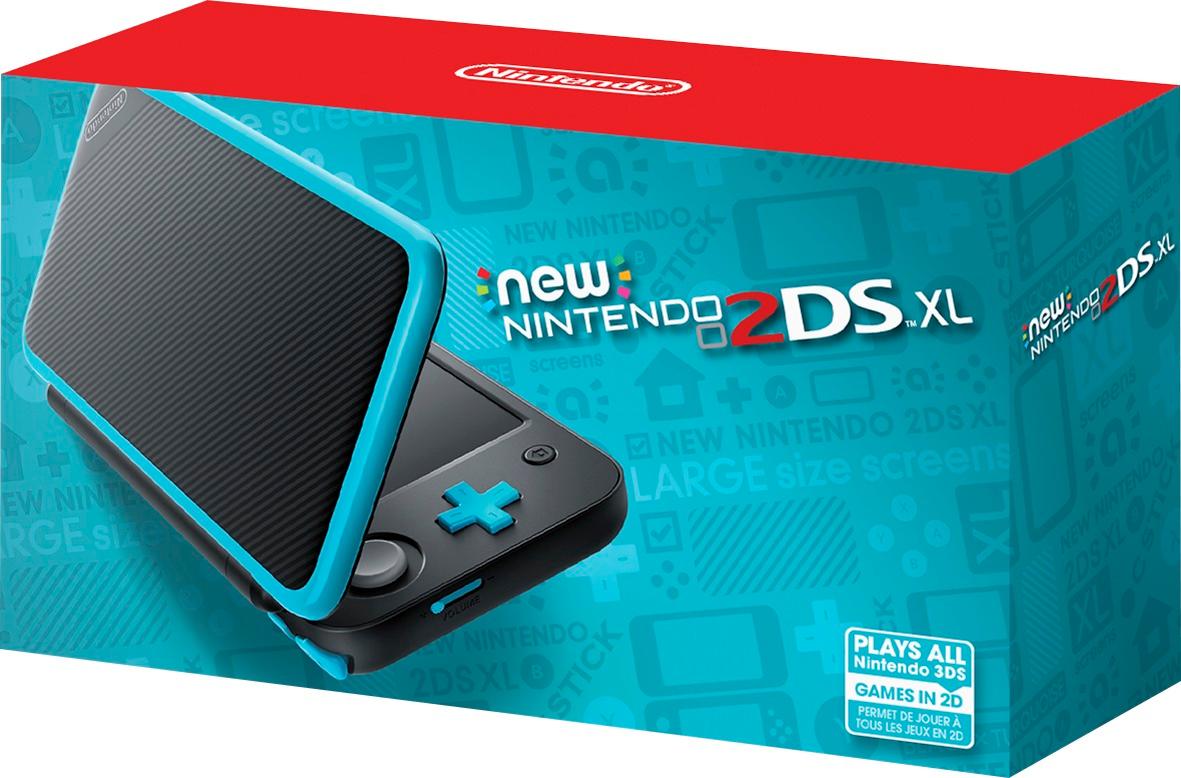
Nintendo Switch put the house of Mario back in good standing with gamers after a few years of what felt like purgatory with the Wii U. Over 17 million units have been sold across the globe along with more than 68 million games.
Prior to E3, GameDaily chatted with analysts who questioned Nintendo’s ability to keep the momentum up for Switch, while noting that now’s the time for Nintendo to really grab a broader audience after locking up the core with games like Zelda: Breath of the Wild, Super Mario Odyssey, third-party efforts like Bayonetta and a bevy of great indie titles on the eShop. Nintendo of America’s head of sales and marketing, Doug Bowser, stressed to GameDaily at E3 last week, however, that the Switch audience is already broad and is getting broader.
“It’s been broad, it really has. You know, we like to say that we want to appeal to players from five to 95, but as we look at the Switch, it’s been really balanced,” Bowser began. “Obviously, when you have a game like Legend of Zelda: Breath of the Wild, or some of the more core content, or mature content you may have mentioned, that’s going to skew a bit older… But we’re also seeing games like Mario Kart 8 Deluxe appealing to a very broad segment. We saw it with Kirby Star Allies, [which] actually [saw] a younger segment coming in and playing. So it really does vary by title.

“Splatoon 2 is a great one that we have found is skewing much younger, and so our goal is, first of all, to have a gaming device that is going to appeal to a broad audience and we believe that, we’re showing it downstairs [in our E3 booth], we really [are] kind of transforming how people think about play. It doesn’t have to be a console experience or a handheld experience, it could be both, and that’s really what we’re continuing to stress.
“And then the breadth of the games that we’re showing right now help us address those different demographics. We’re up to now, 700 titles in the first 15 months of release, and we just added an important one two days ago, with Fortnite. And [players] already downloaded two million of them; obviously it’s the online phenomenon right now.”
Epic Games’ decision to bring Fortnite to the rabid Switch audience was a no-brainer, especially with Nintendo’s growing interest in esports with titles like Splatoon and Smash Bros, which Bowser discussed over at Shacknews. It’s unfortunate that PS4 players looking to continue their progress on Switch are unable to do so, but Nintendo of America boss Reggie Fils-Aime expressed his support for cross-play, adding: “What competitors do is their decision to make. We believe being both developer-forward and fan-forward is in the best interest of the game.”
Getting more active in the esports space is savvy, but if Nintendo wants to capture a broader and younger demographic, the company has several other aces up its sleeve: mobile games, “classic” console releases, and the 2DS handheld platform.
The SNES Classic has been continuing to ship to retailers since its launch last September, and Nintendo is also re-launching the NES Classic at the end of this month, thanks to popular demand. Bowser promised that the NES Classic would be on the market through the holiday season.
“We see it as a great opportunity to do a couple things,” he noted. “One, rekindle the flames of lapsed gamers, those who haven’t played in a long time and may want to, or are nostalgic for the first time they picked up Donkey Kong or the first Super Mario series game. But we’re also finding it’s a great opportunity to expose younger players to classic Nintendo content and into the Nintendo gaming experiences, so we’re going to support that, as I said, through the holiday.

“But we also have an opportunity to support it through the Nintendo Switch online service. And so that’s why we’re making it a part of that. We also have some arcade games that we’re making available through just normal releases on the Switch, so there’s a lot of ways that consumers can engage in that classic content.”
Rumors have been floating around about a potential N64 Classic coming as well, but Bowser said he had “no news on another iteration” of Classic systems.
Bowser’s perspective on the Classic systems can easily be applied to the 2DS handheld as well. While it’s true that many players (and developers) have migrated to the Switch as the new portable of choice, the 2DS is actually a great system for bringing in a younger audience.
“I can tell you right now [the overall 3DS business] is doing well,” Bowser remarked. “If you look at last holiday, we saw a real uptick at the end of the holiday season. We were up 27% on hardware year-over-year in the month of December. If you look at the first five months of this calendar year, so through May, we’re up 10% on hardware, and attaching software at very nice rates, so we still see a strong potential for our handheld business. We’re focusing right now on our 2DS, and our New 2DS XL lineup, because we believe those are great entry points.”
“If you think about a $79 2DS with a game installed or a $149 clamshell 2DS XL with a great screen, it’s a more affordable entry point, and we have definitely found from a demographic standpoint, people that are coming in to those platforms and buying now, and then registering a Nintendo Account, they’re skewing younger,” he continued. “So it’s a wonderful way to bring them into our franchises. We’ve got over 1000 titles on the platform still, and we’re announcing more. We’ve got Captain Toad coming to the platform, we’ve got more games coming in the latter half of the year and then the next year, we still have titles planned on the slate into 2019, and so we’re going to continue to support the platform.”

Mobile gaming is clearly another opportunity for Nintendo to introduce its IP to both a broader and younger audience. The problem, however, as Nintendo President Tatsumi Kimishima put after Nintendo’s last earnings report is that the company’s mobile titles have not yet reached a “satisfactory profit point.” While the late Satoru Iwata was never a big fan of the mobile space, Kimishima and his soon-to-be successor Shuntaro Furukawa are big believers in the opportunity that mobile presents despite the fact that smartphones are obviously not proprietary Nintendo platforms. “From what I can see, smartphone games are the ones I want to expand the most,” he told Nikkei, according to Fortune.
“[Mr. Kimishima] absolutely has been a big proponent of getting into the mobile space, and he’s announced we will continue to make two to three games per year on mobile. That still is the plan,” Bowser said. “Our next one will be Mario Kart Tour, which will be coming out sometime within this fiscal year. And then Mr. Furukawa also… stated he’s looking to expand mobile as a percentage of our overall business, and so we’re looking at various options. For instance, in Japan, later this summer, we’ll be launching Dragalia Lost, which is a venture with Cygames.
“So we want to continue to grow in the space, but to Mr. Kimishima’s point, we also have to learn as we go, so we’ve been looking at a number of different monetization models. Super Mario Run was one monetization model. Fire Emblem Heroes, and Animal Crossing Pocket Camp are other monetization models. So we’ll continue to learn from those models and understand how people are engaging in our content, so we start to make appropriate choices as we go forward. We haven’t necessarily committed however, to one business model, or one monetization model, because what we’ve said in the past is we want to make it specific to the game. It needs to make sense for the game that we’re building, but we absolutely have plans to continue to grow our mobile business going forward.”
It’s worth noting that in Japan and Asia in general, mobile is king. In Japan, where people regularly commute via trains and generally live in smaller homes with less room for massive HDTVs, mobile gaming has become the de facto option. The tastes of gamers overseas also can vary from those in the West.
“One thing we do, as we are in the development phases of building a mobile game, we test it in markets,” Bowser noted. “We test it in various markets to understand how those consumers in those markets will engage in the content and make adjustments accordingly, so it does give us that flexibility, because you’re right, Western gaming is different than gaming in Japan, in some aspects, and so we want to make sure we understand that and incorporate that into what we build.”
Mobile, of course, is an entirely digital platform, but Switch seems to be migrating in that direction, especially given the abundance of digital-only eShop titles available for download. Bowser doesn’t quite see Nintendo being a digital-first company yet, but there’s no denying the revenues are heading in that direction.
If you go to Amazon right now, if you look at Amazon’s best-sellers, the top five best-sellers either have the name Super Smash Bros. Ultimate, or Pokemon Let’s Go Pikachu, or Let’s Go Eevee attached to them.
“We absolutely are seeing that players on the Switch platform are engaging in digital content more than previous platforms,” Bowser affirmed. “And we want to support that. We’ve given the ability obviously, to upgrade your memory. Ultimately, you can get up to two terabytes, when that size SD card may be available, but the system will be able to support that, and so we’re allowing people to customize their Switch however they see fit to be able to consume content.
“We also want to be sure that however you want to purchase that content, you have the ability to. So whether it’s a packaged good, or it’s digital —that’s why we have a couple of initiatives with our retailers to help support that and drive that even further, or through the eShop.”
Nintendo’s E3 2018 showing was a mixed bag of sorts. The company wowed fans with a deep dive into Super Smash Bros. Ultimate, but there was no news about a new Metroid, or a new Animal Crossing or the long-awaited Nintendo Online service. People, and investors, wanted reasons to get even more excited beyond Smash. The company’s stock dipped almost 7% the day after the Nintendo Direct stream, bringing it down 16% through that point in June. Bowser is not concerned, however.
“What we’re focused on really, is first of all, we’ve announced that we plan to ship 20 million units within our fiscal year. That still is our plan. And as we look at the engagement downstairs, we continue to believe that is a solid number,” he pushed back.
“I think what we’re trying to do… Again, I can’t speak to why markets react the way they do, why stock reacts the way it does. What I focus on is how to create awareness of our products, consideration of our products, and ultimately, purchase of our products. And things like this week really do help us get that message across, that we’ll continue to market these products, but I think we’ve got some hits. If you go to Amazon right now, if you look at Amazon’s best-sellers, the top five best-sellers either have the name Super Smash Bros. Ultimate, or Pokemon Let’s Go Pikachu, or Let’s Go Eevee attached to them.
“Out of all the content that has been announced and dated, those are the top five sellers right now, so I think we’re doing what we need to do to continue to drive our business.”
 GameDaily.biz © 2025 | All Rights Reserved.
GameDaily.biz © 2025 | All Rights Reserved.